This week, foreign policy officials from the Biden administration made their first trip overseas. On March 15, Secretary of State Antony Blinken and Secretary of Defense Lloyd Austin met with officials in Japan; on March 17, they met with officials in South Korea. On March 18, Blinken and National Security Advisor Jake Sullivan traveled to Alaska to meet with Chinese officials. What were the key takeaways from the meetings, and what might come next? Below, Brookings experts weigh in.
 David Dollar (@davidrdollar), Senior Fellow in the John L. Thornton China Center: The U.S.-China talks in Anchorage, Alaska got off to a rocky start, as each side chose domestic politics over diplomacy. Expectations for the talks were low, because officials from both countries made sharp criticisms of the other in advance. This may play well politically on both sides of the Pacific, but it is not effective diplomacy.
David Dollar (@davidrdollar), Senior Fellow in the John L. Thornton China Center: The U.S.-China talks in Anchorage, Alaska got off to a rocky start, as each side chose domestic politics over diplomacy. Expectations for the talks were low, because officials from both countries made sharp criticisms of the other in advance. This may play well politically on both sides of the Pacific, but it is not effective diplomacy.
There are a lot of areas where the U.S. and China are not going to agree, and we should not paper over the differences. But it is in the U.S. interest to prevent the differences from escalating to conflict. To that end, it would help to dial down the public rhetoric and to follow the dictum of “speak softly, and carry a big stick.” The U.S. has imposed many technology and trade sanctions on China in recent years. Some of these are important and effective (a big stick). But many are symbolic and ineffective, hurting U.S. interests more than Chinese ones. Hence, it is smart to review these sanctions and to be willing to negotiate away the ones that are largely symbolic.
The two sides could start with some relatively simple moves like reopening consulates and allowing in more journalists in both directions. Some positive movement on these easy issues should work as confidence-building measures that lay a foundation for resolving more meaty disagreements. The U.S.-China diplomacy is important not merely for its own sake, but also because our key allies in Europe and Asia are looking for evidence that the U.S. can approach China in a balanced way, countering China’s aggressive behavior in the security and human rights fields while working with China on issues of common interest such as reducing carbon emissions and maintaining an open global trade and investment regime. Hopefully, there was some progress after the TV cameras were turned off.
 Michael O’Hanlon (@MichaelEOHanlon), Director of Research and Senior Fellow in the Foreign Policy program: On North Korea, a subject of the officials’ discussions this week, I hope Biden gets as creative and bold as he has with Afghanistan. The temptation is to fall back on the tired saw that North Korea must commit to complete, verifiable, irreversible (nuclear) disarmament (or “CVID”), either as a precondition for talks or as the inevitable outcome of any deal. Of course, the United States should not formally recognize or accept a North Korean nuclear arsenal. But neither should we live in the la-la land where we pretend Pyongyang doesn’t have a (growing) arsenal of several dozen weapons already today. Nor should we ignore the analysis that Brookings colleagues Jonathan Pollack and Jung Pak have convincingly provided over the years — that Kim Jong Un, like his father and grandfather, won’t give up all his bombs, because he sees them as family jewels that ensure what happened to Saddam Hussein and Moammar Gadhafi will never happen to him. Even when President Trump half-credibly threatened war in 2017, Kim did not agree to disarm, he only agreed to talk.
Michael O’Hanlon (@MichaelEOHanlon), Director of Research and Senior Fellow in the Foreign Policy program: On North Korea, a subject of the officials’ discussions this week, I hope Biden gets as creative and bold as he has with Afghanistan. The temptation is to fall back on the tired saw that North Korea must commit to complete, verifiable, irreversible (nuclear) disarmament (or “CVID”), either as a precondition for talks or as the inevitable outcome of any deal. Of course, the United States should not formally recognize or accept a North Korean nuclear arsenal. But neither should we live in the la-la land where we pretend Pyongyang doesn’t have a (growing) arsenal of several dozen weapons already today. Nor should we ignore the analysis that Brookings colleagues Jonathan Pollack and Jung Pak have convincingly provided over the years — that Kim Jong Un, like his father and grandfather, won’t give up all his bombs, because he sees them as family jewels that ensure what happened to Saddam Hussein and Moammar Gadhafi will never happen to him. Even when President Trump half-credibly threatened war in 2017, Kim did not agree to disarm, he only agreed to talk.
Yet Kim wants his economy to recover, too, presumably — after it declined by perhaps 15% since 2017, according to South Korean Central Bank estimates. He wants “Pyonghattan” — a country and capital city with some trappings of modernity. He wants byongjin, a combination of security and prosperity. He presumably doesn’t want to rule over an economic basket case for the rest of his life, which could be decades.
So let’s be tough and resolute, but test Kim’s willingness to negotiate. The deal should be this: partial sanctions relief in exchange for complete, verifiable dismantlement of nuclear and intercontinental ballistic missile development and production facilities. He gets to keep the bombs he has now, but must stop testing them or expanding the arsenal. We keep U.S. and certain other sanctions in place, but lift those U.N. sanctions applied in 2017 after the big North Korean nuclear and missile tests. We agree to conduct only mid-sized military exercises with South Korea and gradually improve the relationship — contingent on what happens next.
Otherwise, expect a new crisis on the Korean Peninsula sooner rather than later, if we just try to ignore the problem.
 Mireya Solís (@solis_msolis), Senior Fellow and Director of the Center for East Asia Policy Studies: The Biden administration’s robust diplomatic outreach to allies and like-minded countries in Asia has been welcome news in Tokyo. Concerns that the Biden team would not take ownership of the Free and Open Indo-Pacific (FOIP) concept or adopt a softer line on China have quickly dissipated. With the Quad summit (involving the U.S., Japan, India, and Australia), the 2+2 meeting in Tokyo among foreign and defense ministers, and plans for Prime Minister Yoshihide Suga to be the first foreign leader to visit the Biden White House, Japan has emerged front and center to the current administration’s Asia strategy.
Mireya Solís (@solis_msolis), Senior Fellow and Director of the Center for East Asia Policy Studies: The Biden administration’s robust diplomatic outreach to allies and like-minded countries in Asia has been welcome news in Tokyo. Concerns that the Biden team would not take ownership of the Free and Open Indo-Pacific (FOIP) concept or adopt a softer line on China have quickly dissipated. With the Quad summit (involving the U.S., Japan, India, and Australia), the 2+2 meeting in Tokyo among foreign and defense ministers, and plans for Prime Minister Yoshihide Suga to be the first foreign leader to visit the Biden White House, Japan has emerged front and center to the current administration’s Asia strategy.
The joint 2+2 statement stands out for the broad convergence of priorities and lines of effort for the two allies in the areas of defense, coordination with like-minded democracies, protection of the rules-based order, and tackling transnational challenges such as COVID-19 and climate change. Particularly noteworthy was Japan’s willingness to directly call out Chinese behavior that runs counter to the international order and to affirm its opposition to coercive and destabilizing acts. The allies identified peace and stability in the Taiwan Strait as a key concern, and they acknowledged the importance of trilateral cooperation between the United States, Japan, and South Korea.
This intense week for American diplomacy in Asia was guided by different objectives: to reassure allies that the promise of coordination is real, to set a baseline for U.S.-China relations, and to demonstrate that the United States can deliver on key public goods for the region, namely security and vaccines. But this is just the beginning and important questions loom for Tokyo: Can it maintain its careful balancing act vis-à-vis China? Where else might the Quad align, after showing strong potential on vaccine diplomacy? Will it be possible to stop the downward spiral in Japan’s relations with South Korea? The diplomatic docket is brimming.
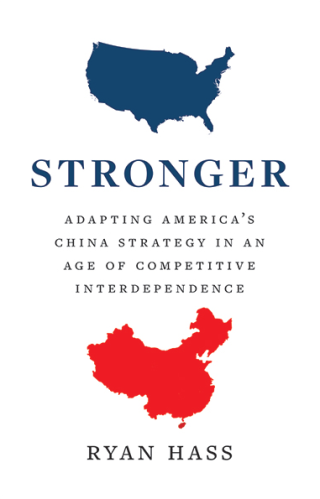
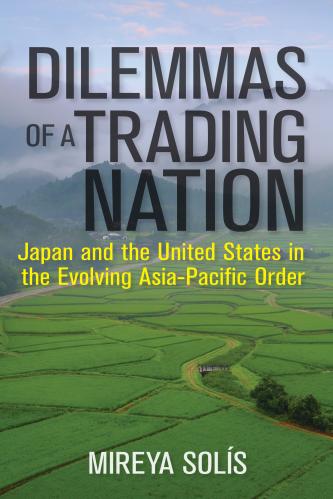
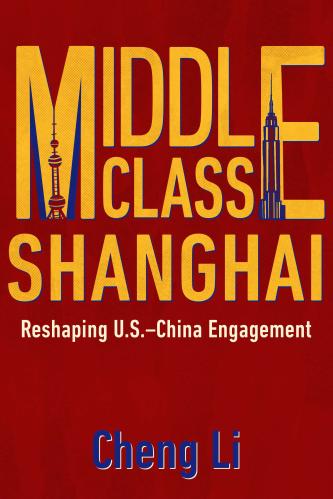
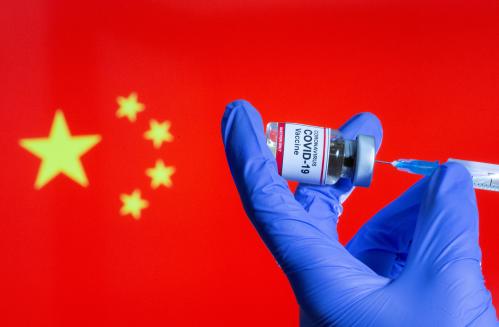
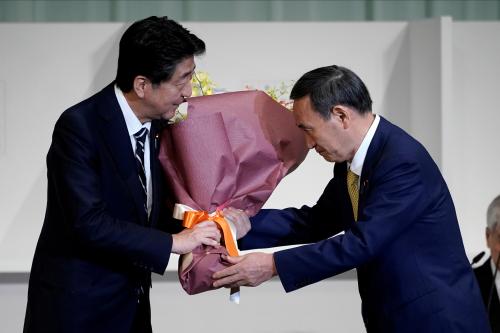







Commentary
Around the halls: Experts react to high-level meetings between American and Asian officials
March 19, 2021